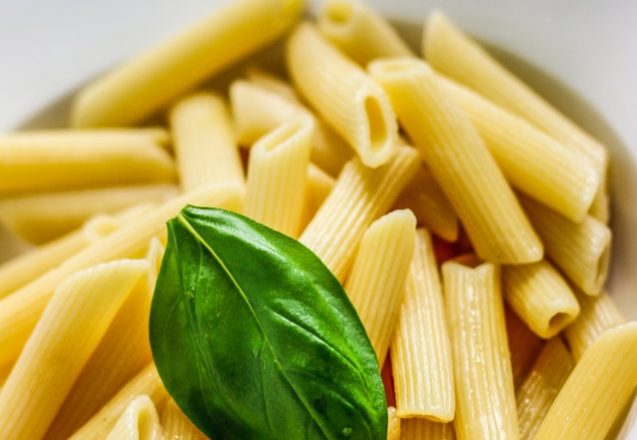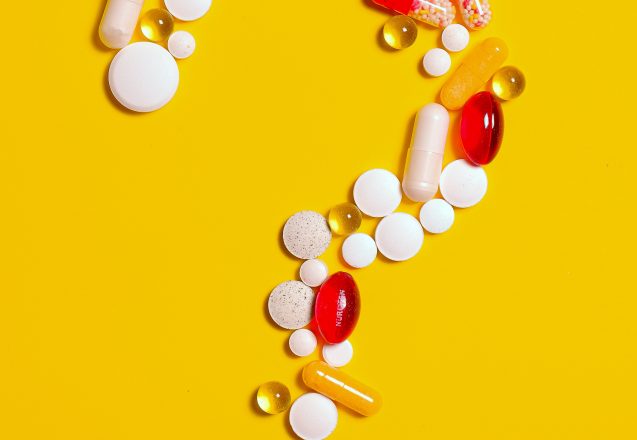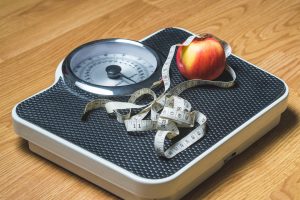Can Hormones Make You Gain Weight?
 No matter where you live, Dublin, CA, Livermore or any other place on the earth, sometimes hormones get out of balance and that may cause you to gain weight. Of course, not all weight gain comes from hormonal imbalance. If you’re eating potato chips dipped in a big bowl of ice cream for snacks, that could be the cause of your problem. If, however, you’re sticking with a healthy diet and still packing on the pounds it may be hormones.
No matter where you live, Dublin, CA, Livermore or any other place on the earth, sometimes hormones get out of balance and that may cause you to gain weight. Of course, not all weight gain comes from hormonal imbalance. If you’re eating potato chips dipped in a big bowl of ice cream for snacks, that could be the cause of your problem. If, however, you’re sticking with a healthy diet and still packing on the pounds it may be hormones.
There are a lot of different types of hormones and many can play a role in weight gain.
Every cell in your body requires hormones to function. Hormones include more than just sex hormones like estrogen, progesterone and testosterone. Hormones deliver messages to all the cells in your body. They affect your mood, growth rate and even your immune system. They also affect where you store fat, weight loss and hunger. For instance, if you get too little sleep, your body makes more ghrelin, the hunger hormone and less leptin, the hormone that makes you feel full. Insulin is another hormone that affects your weight and insulin resistance can lead to weight gain in the abdomen and type 2 diabetes.
Are you under stress?
When you’re under stress, your body sends out hormones, such as cortisol, which prepare your body to fight or run. If you don’t those changes remain in place and cause serious conditions and even weight gain, particularly around the middle, belly fat. How do you counter that problem? It’s easier than you think. Start by mimicking the actions of fight or flight. Run, exercise and get active at high intensity. It burns off the hormones of stress, can help you lose belly fat and leaves you feeling fabulous. Cut out sugary products and highly processed food. Before you know it, you’ll be dropping pounds quickly.
It’s all about balance.
Hormones balance each other out. For every hormone that does one particular job in your body, such as increase your heart rate, there’s a hormone that does the opposite, such as slow your heart rate. The body is all about balance and systems that counter each other. If you have high levels of insulin that reduce sugar levels in your body, your levels of glucagon will be lower. When the insulin reduces the sugar in the blood, glucagon increases glucose to maintain a balance. High insulin levels increase fat fast
- Sex hormones determine where fat is stored, so an imbalance with higher levels of hormones like estrogen, will put weight on hips, thighs and abdomen. Dominance of any of the sex hormones can cause weight gain.
- Inflammation in the body can create hormone imbalance. Foods high in sugar and processed foods are inflammatory. They can lead to insulin resistance, oxidative stress and weight gain. Opt for whole foods, healthy fat and foods higher in protein to help eliminate the problem.
- Find ways to control stress. Strenuous exercise is one way, but you can also combine them with meditation, breathing techniques and other stress relievers like taking a walk or going outside in the sun.
- Get plenty of sleep. You need about 7-9 hours a night. Turn off any electronic devices and sleep in a cooler, dark room. Cut out caffeine. It will help keep your hunger hormones and stress hormones in check.
For more information, contact us today at LIV Fitness



 There are several low carb diets that are making their way to popularity. After all, who can resist a diet that encourages you to eat bacon. However, some people take it to extremes and try to cut out carbs altogether. Just how many grams of carbs, do you actually need daily and what happens when you get too little? First, let’s start by discussing how the amount of carbs is determined and what makes a low carb diet. The amount you require is based on the percentage of calories from carbs. For traditional diets, that amount is 45 to 65%. Low carb diets can be as low as 10% of your calories from carbs.
There are several low carb diets that are making their way to popularity. After all, who can resist a diet that encourages you to eat bacon. However, some people take it to extremes and try to cut out carbs altogether. Just how many grams of carbs, do you actually need daily and what happens when you get too little? First, let’s start by discussing how the amount of carbs is determined and what makes a low carb diet. The amount you require is based on the percentage of calories from carbs. For traditional diets, that amount is 45 to 65%. Low carb diets can be as low as 10% of your calories from carbs.
 How many times have you heard you shouldn’t eat after 8pm? I’ve heard a lot of reasons, one of which is the most popular, but definitely not true. That reason is that the food digests and since you’re not moving, immediately turns to fat. There is a type of logic to that, but you have to remember, no matter when you eat it, a calorie is still a calorie and if you eat 3500 more calories than you burn, you’ll gain a pound. It doesn’t matter when you eat it.
How many times have you heard you shouldn’t eat after 8pm? I’ve heard a lot of reasons, one of which is the most popular, but definitely not true. That reason is that the food digests and since you’re not moving, immediately turns to fat. There is a type of logic to that, but you have to remember, no matter when you eat it, a calorie is still a calorie and if you eat 3500 more calories than you burn, you’ll gain a pound. It doesn’t matter when you eat it.
 If you’re working out regularly at LIV Fitness in Dublin, CA, it’s pretty obvious you care about your health. I talk to many clients who tell me they also work hard to eat healthy, too. One of the most asked questions is about sugar and what the maximum daily sugar intake should be. In other words, how much is too much sugar? One problem is that today, many foods you might not suspect contain sugar. It’s hidden in everything from ketchup to flavored yogurt.
If you’re working out regularly at LIV Fitness in Dublin, CA, it’s pretty obvious you care about your health. I talk to many clients who tell me they also work hard to eat healthy, too. One of the most asked questions is about sugar and what the maximum daily sugar intake should be. In other words, how much is too much sugar? One problem is that today, many foods you might not suspect contain sugar. It’s hidden in everything from ketchup to flavored yogurt.
 If you’ve considered using protein supplements to build muscle or simply want a quick source of protein, you probably have questioned whether they’re a good investment or even if they can be dangerous. First, the answer depends on who is taking them. Some people take protein supplements to build more muscle tissue, but then fail to eat healthy, thinking the protein supplement was enough. Healthy eating should always be the first line of action for building muscle or balancing your diet.
If you’ve considered using protein supplements to build muscle or simply want a quick source of protein, you probably have questioned whether they’re a good investment or even if they can be dangerous. First, the answer depends on who is taking them. Some people take protein supplements to build more muscle tissue, but then fail to eat healthy, thinking the protein supplement was enough. Healthy eating should always be the first line of action for building muscle or balancing your diet.
 Workouts for a flat stomach target the abs and help tone the muscles. However, it’s important to remember that no matter how much you work those abs and core muscles or how toned they get, if the muscle is covered with a layer of fat, you won’t get the results you want. Even worse, visceral fat can make your abdomen large. Visceral fat is belly fat and the hardest to lose. It’s also the most dangerous since it crowds the organs.
Workouts for a flat stomach target the abs and help tone the muscles. However, it’s important to remember that no matter how much you work those abs and core muscles or how toned they get, if the muscle is covered with a layer of fat, you won’t get the results you want. Even worse, visceral fat can make your abdomen large. Visceral fat is belly fat and the hardest to lose. It’s also the most dangerous since it crowds the organs.
 It’s not always easy to fit in 10,000 steps a day, but there are a few hacks that can help you boost the activity each day. It’s not about the actual number of steps, but a way to track your progress and a goal for you to achieve. Having a goal can be a real motivator. When you first start working toward 10,000 steps, you’ll probably find it’s not as easy as you thought, particularly if you live a sedentary life or have a job that keeps you almost chained to a desk. Here are a few ways to boost your steps every day.
It’s not always easy to fit in 10,000 steps a day, but there are a few hacks that can help you boost the activity each day. It’s not about the actual number of steps, but a way to track your progress and a goal for you to achieve. Having a goal can be a real motivator. When you first start working toward 10,000 steps, you’ll probably find it’s not as easy as you thought, particularly if you live a sedentary life or have a job that keeps you almost chained to a desk. Here are a few ways to boost your steps every day.
 If you use any of the online programs at LIV Fitness in Dublin, CA, make sure you use the meal planning app if you want to find snacks that keep you fuller longer. Meal planning isn’t just about three meals a day, but also includes snacks to help you make it through the morning and afternoon so you don’t overeat at meals or binge on candy bars you purchased when you bought gas. Snacks to fill you up and keep you feeling full should contain fiber, fat and/or protein with little or no added sugar if you want a feeling of satiety.
If you use any of the online programs at LIV Fitness in Dublin, CA, make sure you use the meal planning app if you want to find snacks that keep you fuller longer. Meal planning isn’t just about three meals a day, but also includes snacks to help you make it through the morning and afternoon so you don’t overeat at meals or binge on candy bars you purchased when you bought gas. Snacks to fill you up and keep you feeling full should contain fiber, fat and/or protein with little or no added sugar if you want a feeling of satiety.
 There are a lot of ways to lose weight. Some ways are healthy and encouraged. Other ways are not healthy or due to illness, like a bout of the stomach flu that can make you lose lots of water weight. Answering the amount of weight you can lose per week will be based solely on healthy ways to shed weight, not the unhealthy ones, since that amount varies and not desirable.
There are a lot of ways to lose weight. Some ways are healthy and encouraged. Other ways are not healthy or due to illness, like a bout of the stomach flu that can make you lose lots of water weight. Answering the amount of weight you can lose per week will be based solely on healthy ways to shed weight, not the unhealthy ones, since that amount varies and not desirable.
 In almost every restaurant in Dublin, CA that offers complete meals, the waitress or waiter serves the salad first. Health wise, should you eat a salad before your meal, with your meal or should you eat it after the main course. It’s traditional in America, but not necessarily in other countries. Since the brain doesn’t release leptins, the hormones that make you feel full, immediately, if you want to lose weight, it only makes sense to fill up on lower calorie foods, saving the main dish and dessert for last. However, other countries serve salads at different points in the meal for very good reasons.
In almost every restaurant in Dublin, CA that offers complete meals, the waitress or waiter serves the salad first. Health wise, should you eat a salad before your meal, with your meal or should you eat it after the main course. It’s traditional in America, but not necessarily in other countries. Since the brain doesn’t release leptins, the hormones that make you feel full, immediately, if you want to lose weight, it only makes sense to fill up on lower calorie foods, saving the main dish and dessert for last. However, other countries serve salads at different points in the meal for very good reasons.